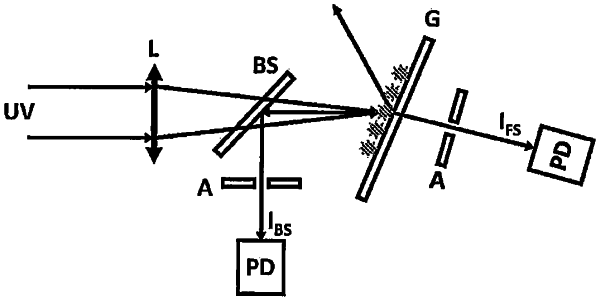|
4. A label-free optical bio particle detection analyzer comprising an ultraviolet (UV) light source for generating a beam of light, said beam of light having a wavelength selected to be within the range of 200-300 nm for use in detection of bio particles within the size range of 20-200 nm; a label-free sample; a stationary transparent sample holder positioned in the path of said beam of light for supporting said sample that may contain bio particles sought to be detected, said beam of light being directed at the said sample by optical components; the sample when interacting with the said beam of light generating both elastic scattering and intrinsic fluorescence signals from native fluorescent molecules in bio particles including at least amino acids tryptophan, tyrosine and phenylalanine, said optical components directing forward scattering light passing through said sample holder, and directing backscattering light after the sample is exposed to said beam of light and for directing intrinsic fluorescence signals and its spectra; first photodetection means for detecting said forward scattering light; second photodetection means for detecting said backscattering light; third photodetection means for detecting said fluorescence signal; signal processing means for establishing the size of bio particles by comparing said forward scattering and backscattering lights based on Mie scattering; and means for estimating the relative concentrations of said native fluorescent molecules based on the contributions of the fluorescent molecules to the detected fluorescence signals being measured by using at least one of a photo detector and a filter or a spectrometer, said contributions of the fluorescent molecules to the detected fluorescence signals being retrieved from the detected signals by using signal processing means; the particle size and relative concentrations of the native fluorescent molecules including amino acids are both used to identify the bio particles that may be present in the sample by comparing the experimental values of the particle size and relative concentrations of the fluorescent molecules to the known values of established bio particles.
|
